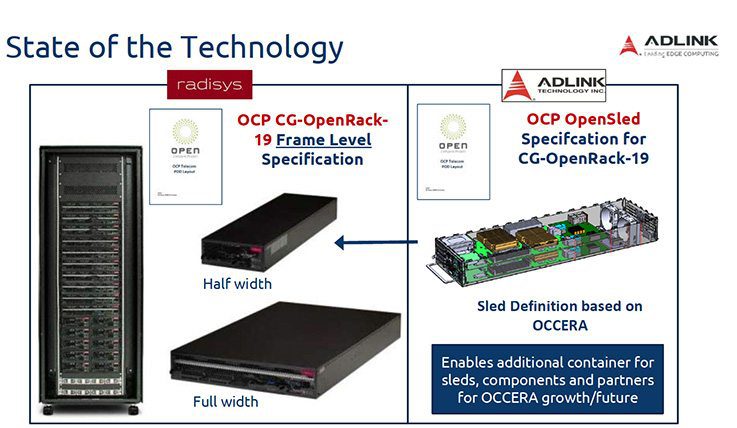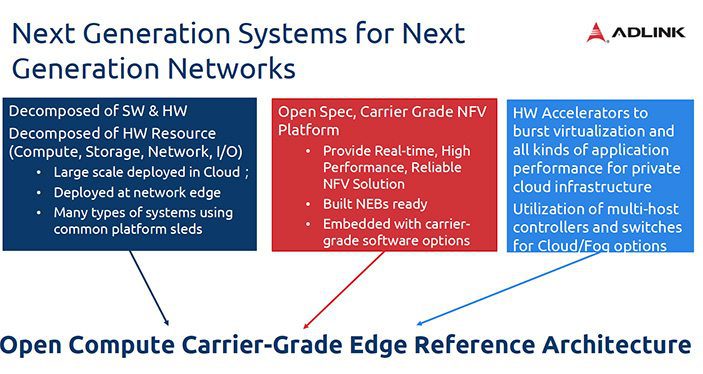As mobile, cable, and telecom operators begin to virtualize their networks, they are also building a robust data center technology. Now, as their networks become more open and commoditized, they are moving away from the long lifecycle, proprietary hardware and software architectures of a single supplier to a more “pick-and-choose” environment allowing flexible and open integration. These trends are what make the Open Compute Project (OCP) open architecture platform increasingly attractive for both data center and edge computing architectures.
The OCP Telecom Group traces its DNA to a 2009 Facebook project aimed at designing the world’s most efficient data center. With around 300 million active users at the time, the social media giant established a data center open to any server, storage, or networking provider as long as they met the specifications. In 2011, along with Intel, Rackspace, Goldman Sachs and Andy Bechtolsheim, Facebook launched the Open Compute Project and incorporated the Open Compute Project Foundation.
The telecom industry outside of the data center, however, has a slightly different technology infrastructure. In a switching office, for instance, the physical size and layout of the cabinets, cooling, power sources, cabling, and overall environment are different. This is one of the motivating market factors that led ADLINK and Radisys to collaborate and create the OCP carrier grade CG-OpenRack-19 and OpenSled Server specifications within the newly formed OCP Telecom Group. This initiative lays the foundation for OCP gear in a telecom environment (OCP Carrier Grade, or OCP-CG). In essence, OCP-CG is pushing OCP architecture outside the data center to include telecom, mobile, and customer premises equipment (CPE), effectively opening up this open-architecture environment beyond data center walls.

Another practical realm for OCP is edge computing technology or Multi-access Edge Computing (MEC). Simply put, it represents anything outside the data center and closer to the customer, or technology requiring lower latency and improved responsiveness that provides increased capacity at the edge. From a telecom perspective, OCP-CG for MEC will become a key technology driver for edge computing. With the exponential increase in devices on the network and requirements for low latency and high speed, ensuring a satisfactory user experience becomes paramount. OCP-CG for MEC solves these issues. It’s akin to having a data center at the cell site or in the switching office that enables dedicated servers for specific applications such as geolocation services, video transcoding and delivery, emergency services, or a real-time augmented reality experience of touring through a museum.
The Radisys OCP CG-OpenRack-19 specification details the physical nature of the frame, interconnects, and power that operators install in a central office, and it’s all plug-and-playable. OCP-CG OpenSled is ADLINK’s non-proprietary, OCP-ACCEPTED™ specification that operators can implement at the edge that fits into the CG-OpenRack-19 frame. With OpenSled, ADLINK is adding tremendous value by opening the architecture of the OCP-CG OpenRack infrastructure and defining the sled specification, enabling a multi-faceted architecture which can have plug-and-playable components within the sled. This open architecture enables any manufacturer to build different types of sleds compatible with the OCP CG-OpenRack-19 and OpenSled specifications.
The OCP-CG environment enables a much greater density of compute, storage and switching in each frame than traditional server architectures. A single sled can accommodate up to eight CPUs with up to 24 cores per CPU. Therefore, one could have 192 virtualized cores in a 2U space with up to 288TB of storage per 2U (up to 12 storage sleds) in the OCP-CG OpenRack layout. In other words, in a 42U frame (38U usable space), one could have well over a thousand cores running thousands of different applications, all on one common architecture while exceeding existing throughput and meeting the latest open management requirements. Providers can also implement various accelerators, cryptology, enhanced I/O and even proprietary-based components for security, deep packet inspection, or routing functionality, adding unique value to their service offerings, such as next generation machine learning, artificial intelligence, and analytics.

Another use case utilizing edge computing technologies is customer premises equipment (CPE). Providing the required processing and storage power of a server but situated adjacent to or at the customer’s premises, CPE brings the necessary power, functionality, processing speed, and a positive user experience to customers who do not want to invest in a large IT infrastructure. It also opens up a new revenue stream for operators who can now provide a box, internet access, security services, routing services, databases, and virtualized applications to enable a powerful yet cost effective solution.

ADLINK’s OCP-CG OpenSled specification is opening up the Open Compute Project to new market opportunities in telecom. OpenSled provides a common architecture, plug-and-play capabilities, and dense and next-generation compute horsepower, all in a tested environment that’s been around nearly ten years, simplify implementation and extending capabilities. Additionally, working as partners with other suppliers in an open architecture environment enables a broader ecosystem of partners who ultimately bring their unique products and services for mutual benefit.

